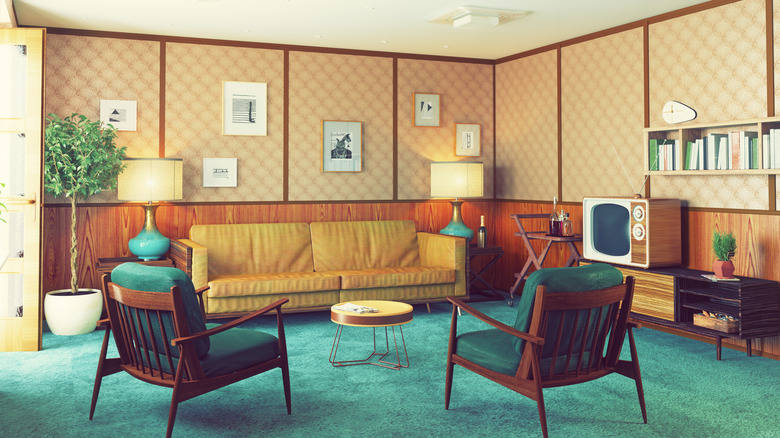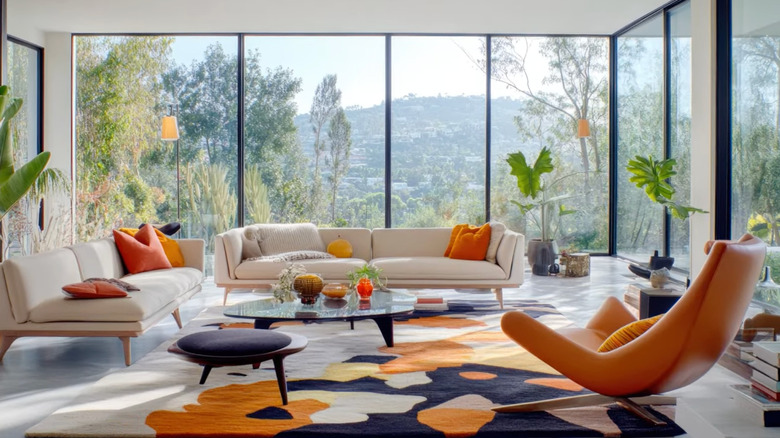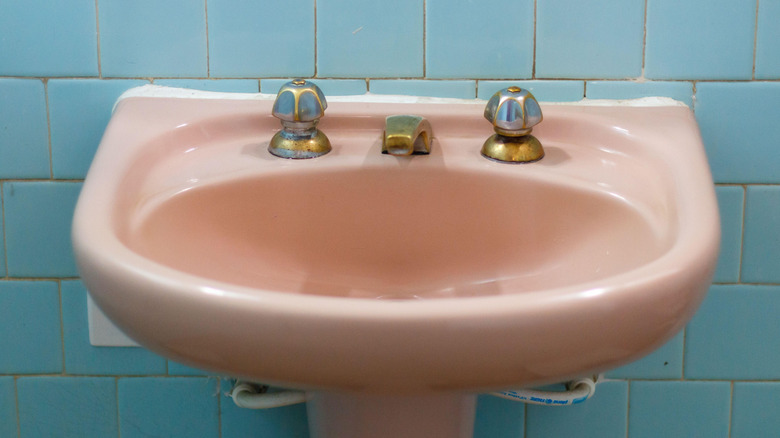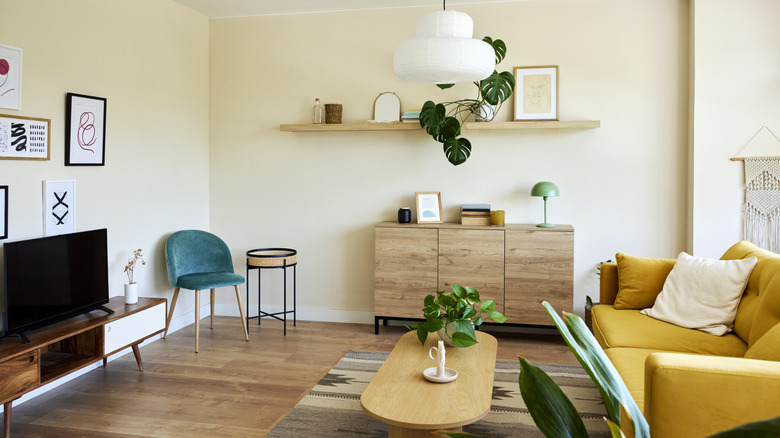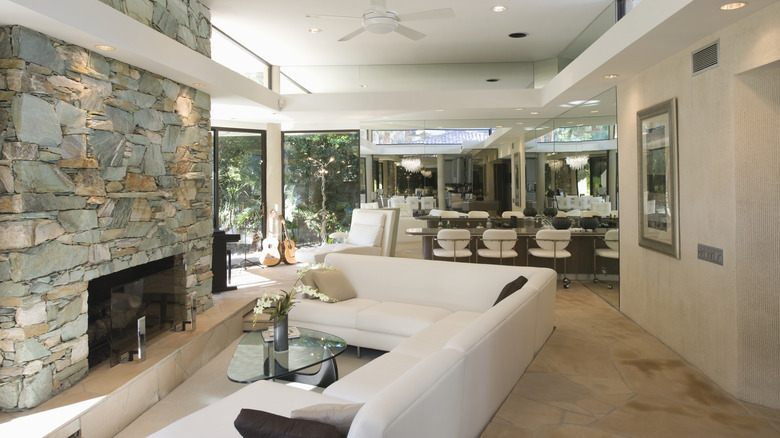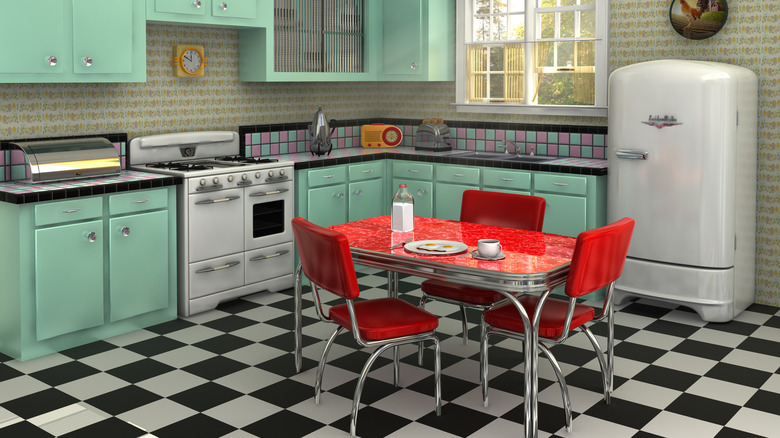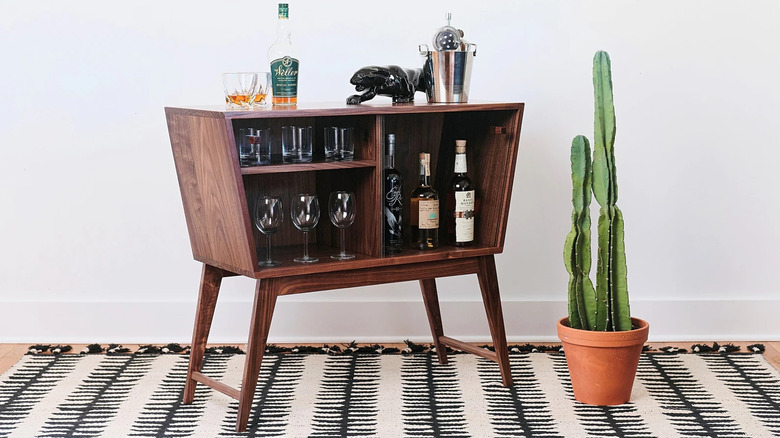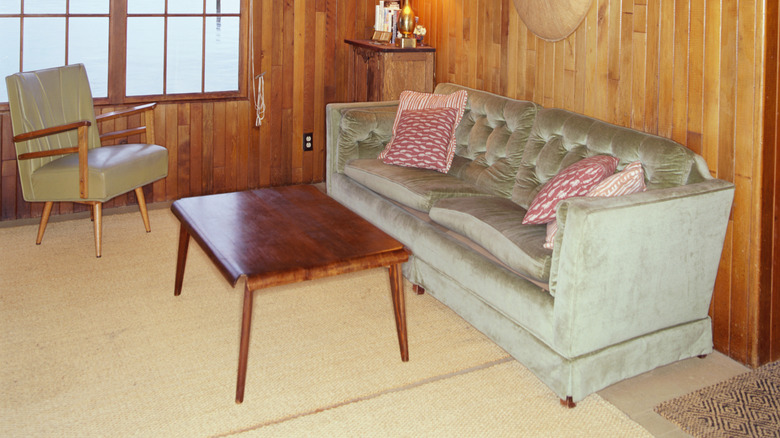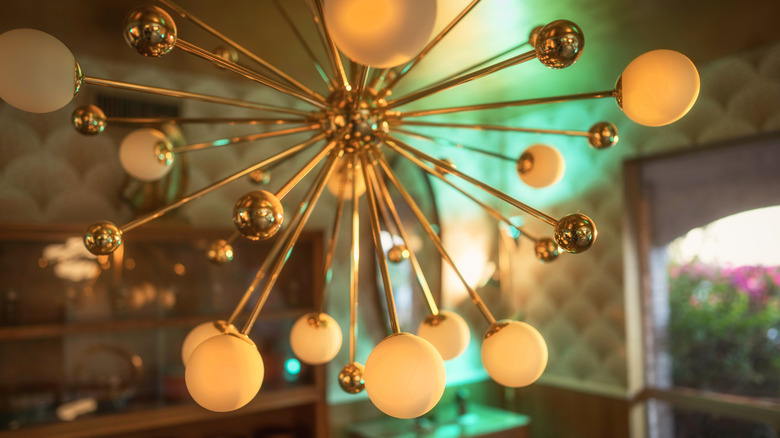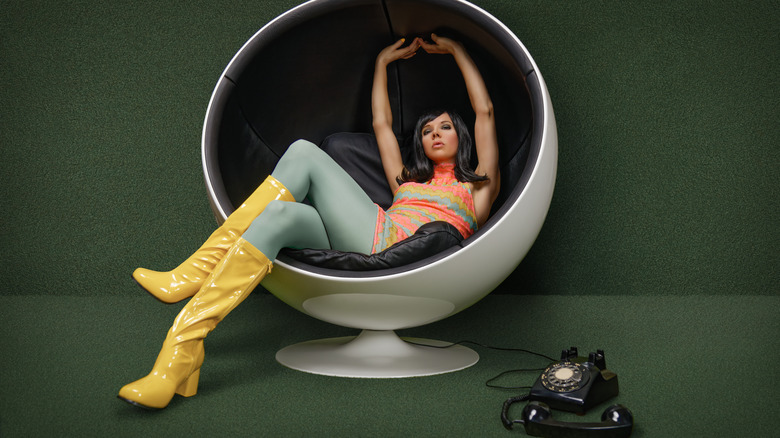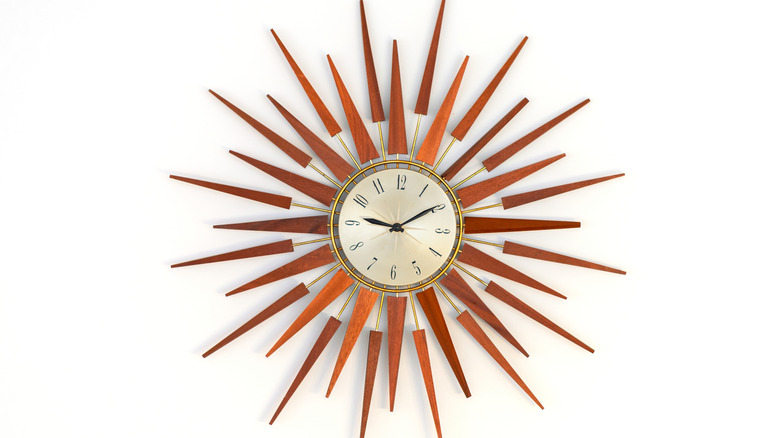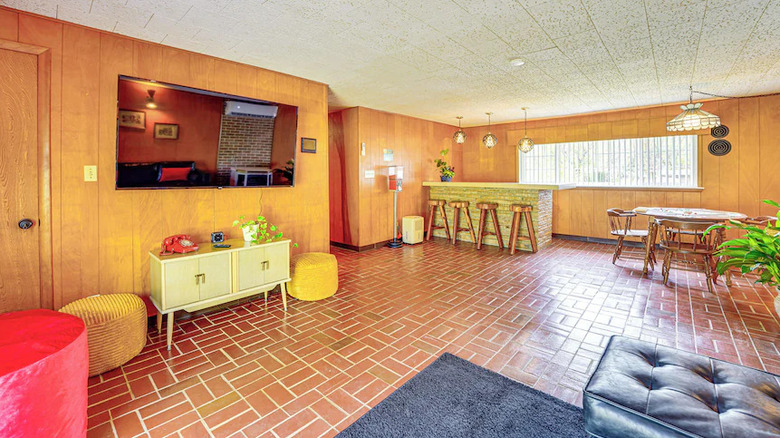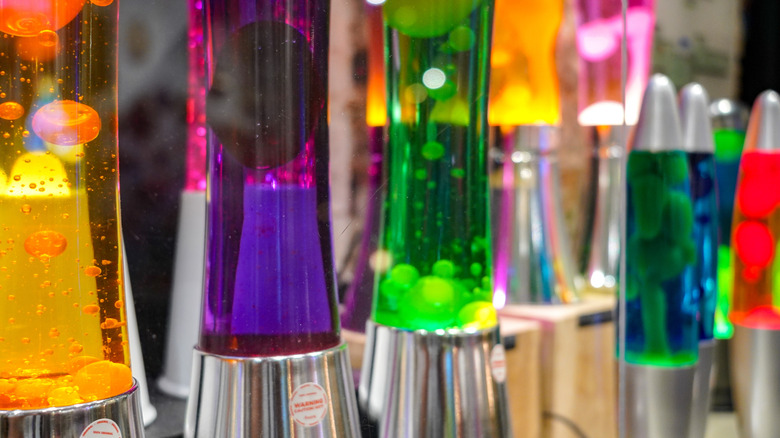Home Decor Trends That Every Boomer Remembers
We may receive a commission on purchases made from links.
Though now overtaken in numbers by the millennial generation, baby boomers — those born from 1946 to 1964 — were the largest generation ever born in the United States, thus boasting an outsize collective memory of home decor trends through the years. The oldest members of the generation turn 80 in 2026, while even the youngest will be eligible for Social Security at 62. Growing up in the 1950s and 1960s, baby boomers were surrounded by decor that reflected the optimism of the post-World War II years and a yearning for the future.
From color schemes that featured both pastels and vibrant jewel tones to space-age and atomic-age design sensibilities, the coming-of-age years for boomers reflected prosperity, forward-thinking, and a recommitment to the home as the center of family life. Some of the decor trends that fill the memories of boomers are worth reviving from time to time, while others are best left in the past. But the trends detailed here tell the story of an unforgettable moment in time.
Huge windows
In many mid-century modern homes, it wasn't just about windows, but walls of huge windows, sometimes floor-to-ceiling or close to it. Homeowners of the day were interested in bringing nature indoors. Clerestory windows, narrow windows just under the ceiling, were also popular in the early boomer years. Picture windows, large windows that didn't open, were often the focal point of living rooms. Windows above the kitchen sink provided a view for homemakers washing dishes or prepping meals. Large and plentiful windows emphasized clean, architectural lines. Whether or not you're a boomer, if you're nostalgic for big windows, check out the best way to make your windows appear larger.
Pastel colors
Boomers recall that color trends in the 1950s were soft pastels — pale green, powder blue, light yellow, and especially pink, inspired by First Lady Mamie Eisenhower, who favored pink. Pink bathrooms were not uncommon once the public learned that Mamie always chose a pink bathroom as she followed her husband, then-General Dwight D. Eisenhower, from one military assignment to the next. At the same time, these soft colors reigned; rich, saturated colors, such as turquoise, chartreuse, and red, provided accents, perhaps influenced by improvements in technicolor films of the time.
Scandinavian furniture
Light-colored wood like teak, oak, birch, and pine, which was popular in the early baby boomer years, could be found in Scandinavian furniture design, especially the Danish Modern style that evolved in the 1940s (check out the ultimate guide to Scandinavian decor). Clean, minimalist lines and simple shapes characterized this style, along with natural materials. The simplicity and functionality of this design choice were perhaps a calm, orderly response to the complexity and turmoil of World War II. Scandinavian furniture pieces were often made entirely of the same material.
Sunken seating/Conversation pit
Conversation pits in sunken areas of a home were all the rage for entertaining in the late 1950s and early 1960s, and boomers who never saw them in real life probably did on TV and in movies. The idea was a cozy area, where folks would have to step down to seating in a lower portion of the room. Seating would often be arranged in a rectangle or horseshoe shape to facilitate chat among friends. When living-room life became more focused on TV-watching than on entertaining, socializing, and making conversation, conversation pits fell out of favor. They were also awkward to maneuver in and a bit of a safety hazard. The stars of "Unsellable Houses" recommend ditching this once-popular home feature.
Formica, linoleum, and chrome, oh my!
Many kitchens in the early boomer years appeared highly slick and modern for their time, but what really tied kitchens of this era together were the ubiquitous materials found in them. Patented in 1860, linoleum made its debut long before the 1950s but was still used up to the 1960s, when it began to be replaced by other flooring materials. Formica, a laminate material first developed for wartime applications, became the classic countertop of the boomer years. Fifties diner-style shiny chrome could be found throughout kitchens as the material for appliance handles, drawer pulls, cabinet handles, small appliances, and more.
Cocktail bar
If you grew up as a boomer watching TV and movies, you probably felt it was normal for adults to be holding a cigarette in one hand and a cocktail in the other. The '50s represented a shift in which, for the first time, more people drank alcohol at home than in bars and restaurants, and cocktail parties became big. Cocktail culture enjoyed a heyday in the 1950s, and home bars were not unusual. Showing off the accouterments of this lifestyle — shakers, ice buckets, martini glasses — was all part of the fun. If you're missing this vibe, consider home bar ideas that will transform your home into the ultimate hangout spot.
Wood paneling
We've noted the mid-century attraction to nature and natural materials like wood. Entire rooms and sometimes entire homes with interior walls clad in wood paneling became the most extreme expression of this trend. Knotty pine was a particularly popular paneling choice. The paneling trend was born in the 1940s when wood and veneer technology made the look affordable. The warmth of wood served as a counterpoint to modern materials, such as gleaming metals and abundant glass windows. Boomers may be nostalgic for wood paneling, but if you have this vintage look in your home, consider updating wood paneling to make it look like a regular painted wall.
Atomic patterns
Post-war America was a time of prosperity, technological gains, and a new focus beyond earth. The news told of both the threat of The Bomb and the promise of atomic energy. Toward the end of the 1950s, Russia kicked off the space race with the launch of its Sputnik satellite. From this optimistic yet cautious time emerged "Atomic Space Age Design," reflected in the pattern pictured above. Symbols that evoked space and the atomic age, a scientific look, and geometric shapes were common in textiles and decor. Note that boomerang shapes like those seen above dominated one of Formica's most popular countertop patterns.
Space age light fixtures
What if we told you a version of the iconic 1950s "Sputnik" chandelier was on the market well before the Sputnik satellite was launched in 1957? Mid-century modern lighting designer Gino Sarfatti produced a fixture he called "Fireworks" in the early 1950s. The speculation is that it came to be called the Sputnik chandelier after the satellite's launch. A much more lavish version by J. & L. Lobmeyr, featuring Swarovski crystals, appeared in the early 1960s, and fixtures were installed at the Metropolitan Opera. Another Sputnik chandelier fun fact: The lighting fixtures are very close in size to the actual Sputnik satellite, which was only 22 inches in diameter.
Ball chair
Emerging in the early 1960s, the ball chair resulted from Finnish designer Eero Aarnio's quest to work with a material new at the time, fiberglass, and to take advantage of the durability of a curved design. Though the ball chair fits in with '50s and '60s space-age, futuristic design, Aarnio said his aim was functionality and an unusual design that would turn heads. The chair took a while to catch on, but finally attained success after being shown at a 1966 furniture exhibition.
Sunburst clock
Several mid-century trends came together in the design of the ubiquitous starburst (also known as sunburst, though the sunburst clock had rounded, softer spokes) wall clock — minimalism, fascination with outer space and the atomic age, geometric shapes, and natural materials like wood. Designed by George Nelson, these clocks were truly a break with tradition. Starburst decor is among home decor ideas to bring back the '50s and appeared on decor items beyond clocks, such as mirrors and light fixtures.
Rec rooms
The boomer era of the 1950s represented a turning point for basements. A housing boom accompanied a baby boom — and basements suddenly were much more commonly included in new-construction homes than in the past. Basements were the perfect spot for recreation — "rec" rooms provided extra living space without the need for an addition. These subterranean family-fun spots might contain a bar, card table, pool or ping-pong table, loungey seating, or a hobby area, as the 1950s also saw a boom in hobbies.
Lava lamps
Lava "lamp" is a bit of a misnomer because these decor items don't give off much light. Invented by British accountant Edward Craven Walker, these colorful oddities became associated with hippie counterculture and psychedelic grooviness of the late 1960s and early 1970s. Every self-respecting dorm room had one (today, most colleges ban them as fire hazards). Walker called them Astro Lamps and thought they should be marketed as a sort of executive desk accessory. The liquid contents of the colorful lamps are a proprietary mix of a water-based and a wax-based insoluble. The wax "bubbles" move about in the water in a mesmerizing way. Despite a resurgence in popularity around the turn of the 21st century, the objects are not exactly trendy now. If you have one, though, there are ways to breathe new life into a vintage lava lamp.
